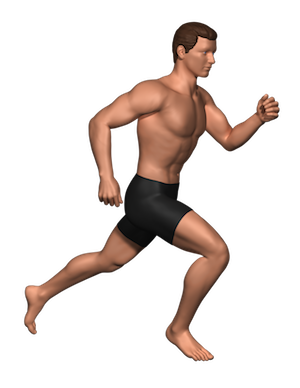Neck pain can have many causes. Chronic pain affects more Americans than diabetes, heart disease and cancer combined. Neck pain is the third most common pain behind back pain and headaches. The natural chiropractic approach to neck pain is to locate the structural distortion in the spine and to relieve the nerve interference in that region.
Here are some of the more common problems:
Spinal Stenosis
This is a narrowing of the canal within your spine that houses the spinal cord. Spinal stenosis occurs most frequently in the lower back and neck. Symptoms are numbness and tingling in the arms, hands, legs or feet as well as weakness in the arms or legs. Patients also complain of bending backwards and looking up. Stenosis is usually causes by a combination of the following that can protrude inside the canal: disc herniations, joint arthritis and enlargement of the ligament behind the discs. This scenario decreases the space for the spinal cord and nerves. The typical sufferer will walk bent forward or will keep their head down as this posture relieves discomfort. Stenosis can be seen in younger ages but is more common in older patients. Chiropractic adjustments may help to take pressure off the nerve structures thereby relieving pain.
Neck Pain Herniated Disc
Spinal discs lie between two vertebrae with the lowest disc lying between the spine and the sacrum. Anatomically, discs have an outer layer called the annulus fibrosis. It is made up of fibrocatrilage which is the strongest type of cartilage in the body. Its purpose is to withstand compression which it does very well. If a healthy disc is sufficiently compressed between two vertebrae, the vertebrae will fracture before the disc will rupture. The inside of the disc is called the nucleus pulposus which is made of glycosaminoglycans (GAG). It functions to act like a shock absorber/ ball bearing and to absorb water; up to 9 times its own weight. Injuries to the discs of the cervical spine (neck) are very common. When a disc herniates, it usually goes straight back, to the left or to the right. These herniations can put pressure on the nerves coming out of the spine. Because the nerves in the neck travel down the arms all the way to the fingers, patients may experience pain, numbness or tingling down the arms. Many people present for chiropractic as a last resort for relief of disc problems. Many are happy they did.
Whiplash
This is many times the result of a motor vehicle accident but can also be the result of sports injuries or falls. Whiplash is also known as CAD (Cervical Acceleration-Deceleration). It is the result of a sudden force that causes a rapid, unrestricted forward and backward motion of the head and neck. Whiplash can cause injury to the vertebrae, joints, discs, muscles, tendons and ligaments. It can lead to chronic pain and premature degeneration of the spine. Chiropractic will evaluate the normal curve and positioning of the vertebrae to determine the extent of injury and the proper treatment protocol.
Poor Posture
I can’t tell you how many times I have seen poor posture lead to neck pain in my practice. When we examine or daily lives and activities, we will notice that almost all our neck motion is in flexion (looking down). We hardly ever look up. This constant flexion causes weakness in the muscles in the back of the neck. This is turn helps straighten or reverse the normal curves in our necks. Without normal curves, there cannot be normal motion and function. This leads to imbalance, pain and eventually degeneration in our spines. Our habits have even instilled doctors to create the term “text neck”. Sleeping on only one side constantly or on too many pillows, working while holding a phone to our ear with a shoulder and writing or typing with our heads down all contribute to poor posture. Chiropractic can help educate you and correct the spinal postural distortions.
Muscle Strain
There are many muscles in the neck. They are subject to many stresses during the normal work day not to mention accidents and injuries. Computer work, crimping a phone in one ear, texting, sports and motor vehicle accidents can all lead to muscle strain. A strain is a overstretching or tearing of a muscle or tendon. Symptoms are soreness and achyness even at rest, pain with pressure or motion, bruising or weakness. Performing a certain task for many hours when it has not been performed in a long time can lead to strain. Torticollis may be due to this. Chiropractically, spinal balance will be evaluated as well as muscle tone and flexibility. This will help determine the proper route of treatment.
Disclaimer
Chiropractors, like other doctors, cannot diagnose or treat patients without examining them in person. The information provided on this site is for general educational purposes only. If you are concerned about actual symptoms or complaints, consult with your own chiropractor.
Fun Fact
Believe it or not but a giraffe has the same number of vertebrae in the cervical spine (neck) as humans do. Seven!
Disclaimer
Chiropractors, like other doctors, cannot diagnose or treat patients without examining them in person. The information provided on this site is for general educational purposes only. If you are concerned about actual symptoms or complaints, consult with your own chiropractor.


